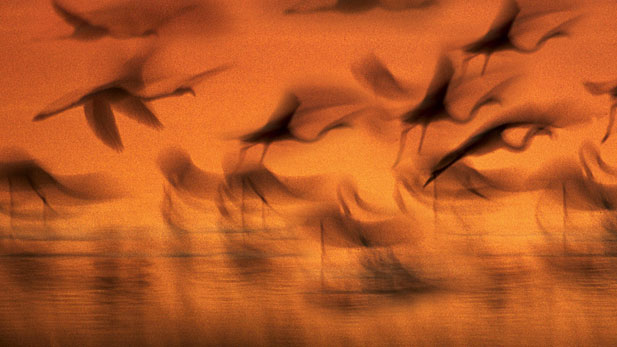Two films explore one of the last truly wild places on the planet.
 Flamingos swirl above a temporary desert lake.
Flamingos swirl above a temporary desert lake. 8 p.m.
Kalahari: The Great Thirstland
For years, the Kalahari Desert can appear to be one of the most barren wastelands on earth. But its swirling hot sands hold unseen treasure - a swarming superabundance of life, brought forth by a brief season of sudden, unpredictable storms. Butterflies, termites and locusts burst forth in staggering numbers. Millions of quelea birds swirl in the sky like smoke. Most impressive is the giant bullfrog - the size of a dinner plate with a voice to match, this amphibian waits out the dry years entombed deep underground.
9 p.m.
Kalahari: The Flooded Desert
Like a miracle, in the middle of the driest time of year, water from the distant mountains flows in the flood plain of the Kalahari, creating a spectacular wetland in the heart of the desert. But it only stays for a while.


By submitting your comments, you hereby give AZPM the right to post your comments and potentially use them in any other form of media operated by this institution.